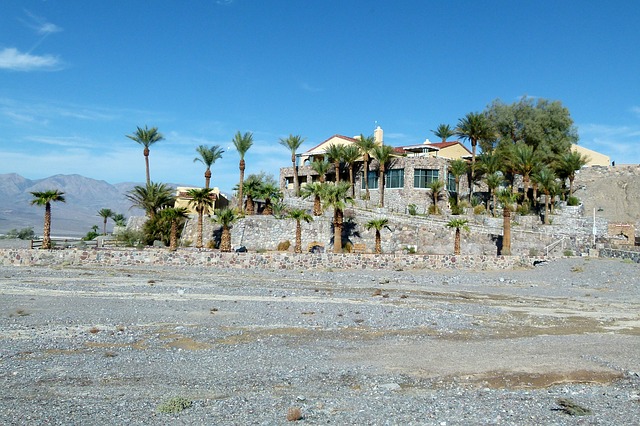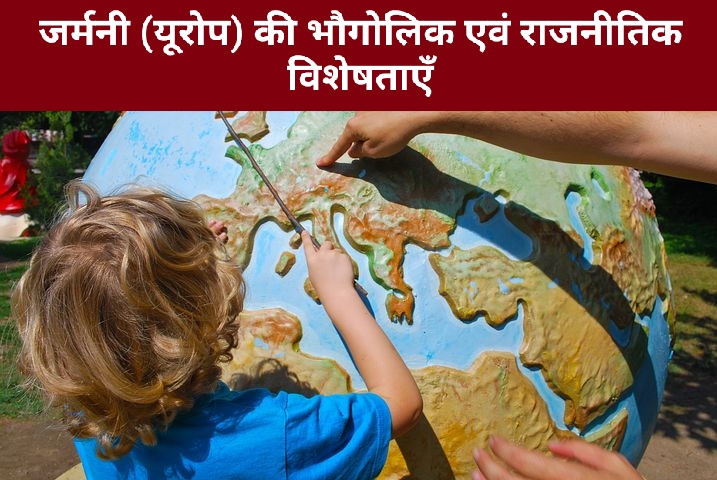
भारत का भूगोल : मृदा अपरदन (Geography of India : Soil Erosion)
The destruction of the upper layers of the soil is called 'soil erosion' . Soil erosion causes erosion of the top layer of soil. The reason for this is natural and human activities. There is a balance in the process of soil erosion and soil formation by nature, while disturbance in the balance is created when soil erosion is caused by human actions. There are several reasons responsible for soil erosion. For example, unscientific methods of flowing wind, transported water, agriculture and animal feed, mining, construction of human settlements. Apart from this, soil erosion is also happening due to many other human activities, and soil pollution also occurs.
मृदा अपरदन के कारण (Reasons of soil erosion) :
जलीय अपरदन (Water erosion) : जल से मिट्टी के घुलनशील पदार्थों को घोलकर एक स्थान से दूसरे स्थान के लिए परिवहित किया जाना जलीय अपरदन कहलाता है। जल के भार से दबाव उत्पन्न होता है। इस कारण मिट्टी का स्थानांतरण 'जलगति क्रिया' कही जाती है। इस क्रिया में वर्षा की विशेष भूमिका होती है, क्योंकि अत्यधिक वर्षा वाले स्थानों में वर्षा के जल व बाढ़ से समस्या ग्रस्त होने के पश्चात मृदा अपरदन की संभावना बढ़ जाती है।
Aqueous erosion is the dissolution of soluble substances of soil by water and transported from one place to another. Pressure is generated by the load of water. For this reason, soil transfer is called 'hydration action' . Rainfall has a special role in this activity, as the chances of soil erosion increases after rainwater and flooding is a problem in places with excessive rainfall.
निर्वनीकरण (Deforestation) : वन, वायु की गति व पानी के बहाव को कम करता है, एवं पेड़ों की जड़ें मिट्टी को जकड़कर रखती हैं। इन क्रियाओं की पर्यावरण संतुलन में विशेष भूमिका है, किंतु मानवीय क्रियाओं द्वारा वनों का अविवेकपूर्ण दोहन व कटाई से मृदा अपरदन होता है, एवं मृदा प्रदूषण होती रहती हैं।
The forest reduces the speed of air and the flow of water, and the roots of trees hold the soil. These actions have a special role in balancing the environment, but the indiscriminate exploitation and harvesting of forests by human actions leads to soil erosion, and soil pollution.
अत्यधिक पशुचारण (Excessive pastoralism) : अत्यधिक पशु चारण भी मृदा अपरदन में अपनी भूमिका अदा करता है। इससे मिट्टी का गठन ढीला पड़ता जाता है। परिणाम स्वरूप वायु अपरदन एवं जलीय अपरदन तीव्र हो जाता है।
Excessive animal feed also plays a role in soil erosion. This leads to loosening of soil formation. As a result, wind erosion and water erosion intensify.
वायु अपरदन (Wind erosion) : कई बार पवन तीव्र गति से चलती हैं। तीव्र पवनों द्वारा सूक्ष्म कणों को अपने साथ उड़ाकर एक स्थान से दूसरे स्थान ले जाना 'अपवहन' कहलाता है। कई बार मृदा अपरदन चक्रवातों के द्वारा भी हो जाता है, जिससे चक्रवात मिट्टी को उड़ा ले जाकर छोटे गर्त का निर्माण कर देते हैं।
भारत वर्ष में मई एवं जून माह में रबी फसलों की कटाई के बाद सतलुज - गंगा - ब्रह्मपुत्र मैदान की उपजाऊ मृदा का भी पवन द्वारा पर्याप्त मात्रा में अपरदन होता है। इससे मृदा का विनाश होता है एवं ऊपरी परत को नुकसान पहुंचता है।
Many times the winds move at a high speed. Moving the subtle particles from one place to another with strong winds is called 'devection' . Sometimes soil erosion is also caused by cyclones, causing cyclones to blow up soil and create small troughs.
The fertile soil of Sutlej - Ganga - Brahmaputra Maidan is also eroded in sufficient quantity by wind after harvesting rabi crops in May and June in India. This causes soil destruction and damages the top layer.
हिमानी अपरदन (Glacial erosion) : बर्फ की नदियाँ 'हिमानी' कहलाती हैं। हिमालय में हिमरेखा के नीचे बहने वाले बर्फ एवं जल को 'हिमनद' कहते हैं। यह चट्टानों तथा मिट्टी को काटकर निचली घाटी में जमा देते हैं जिन्हें 'हिमोढ़' कहा जाता है। इससे भी मृदा का अपरदन होता है।
The rivers of snow are called 'Himani' . The ice and water flowing under the Himalayas in the Himalayas is called 'Glacier' . They cut rocks and soil and deposit them in the lower valley which is known as 'snowy' . This also causes soil erosion.
भूस्खलन अपरदन (Landslide erosion) : भूस्खलन अपरदन पहाड़ी सतह अथवा पार्वतीय ढाल के नीचे धँसने के कारण होता है। सामान्य रूप से ढालों की कटाई, खुदाई, भूस्खलन या कमजोर भूगर्भ ढ़ाल होने के कारण मृदा अपरदन होता है।
Landslide erosion is caused by subsidence under a hilly surface or a hillslope. Soil erosion usually occurs due to slopes being harvested, excavated, landslide or weak ground gradient.
झूम कृषि (Jhoom Agriculture) : झूम कृषि के दौरान जब एक स्थान से दूसरे स्थान पर कृषि करने हेतु पेड़ों को काट दिया जाता है, तो वनों के कटाव से मृदा अपरदन होता है एवं मिट्टी के आवश्यक तत्व भी बह जाते हैं। सामान्यतः आदिवासियों द्वारा इस प्रकार की कृषि की जाती है।
During jhum cultivation, when trees are cut from one place to another, then erosion of forests causes soil erosion and the necessary soil elements are also washed away. This type of agriculture is generally done by the tribals.
अन्य कारण (Other Reasons): भूमि को बंजर छोड़ने, वनों में आग लगने, त्रुटिपूर्ण फसल चक्र अपनाने की विधियाँ आदि के द्वारा भी मृदा अपरदन होता है।
Soil erosion is also caused by leaving the land barren, fire in the forests, methods of adopting faulty crop cycle, etc.
मृदा अपरदन से बचाव के उपाय (Measures to prevent soil erosion) :
फसल चक्र (Crop circle) : इसके अंतर्गत मृदा अपरदन को कम करने के लिए अनुकूल फसलों का अन्य फसलों के साथ चक्रीकरण करने पर मृदा अपरदन को कम किया जा सकता है। इस प्रक्रिया के द्वारा मृदा की उर्वरता बढ़ती है।
Under this, soil erosion can be reduced by cyclization of favorable crops with other crops to reduce soil erosion. Soil fertility increases through this process.
पाट्टीदार खेती (Striped Farming) : इस खेती में बड़े जोतों के खेतों में पट्टी का निर्माण कर जल प्रवाह के वेग नियंत्रित किया जा सकता है। इससे मृदा अपरदन कम हो सकता है।
In this farming, the velocity of water flow can be controlled by constructing a strip in the fields of large holdings. This can reduce soil erosion.
पलवार या मल्चिंग (Mulching) : इस क्रिया के अंतर्गत खेतों में फसल अवशेष की 10 से 15 सेंटीमीटर पतली परत बिछाकर वाष्पीकरण की प्रक्रिया में रुकावट उत्पन्न की जा सकती है। इससे मृदा का संस्तर सुरक्षित रहता है, एवं मृदा को प्रदूषित होने से बचाया जा सकता है।
Under this action, the process of evaporation can be created by laying a 10 to 15 cm thin layer of crop residue in the fields. This keeps the soil layer safe, and the soil can be protected from being polluted.
वर्मी कंपोस्ट (Vermis compost) : प्राचीन समय से ही यह किसानों का सबसे हितकारी प्रयोग रहा है। बहुत पहले से ही इसका प्रयोग किया जाता है। यह पूरी तरह से केंछुए पर आधारित है। केंचुए को 'किसानों का मित्र' भी कहा जाता है। वे मिट्टी में मौजूद घास फूस व अन्य खरपतवार को मारकर उनसे खाद बनाते हैं, जो कि पेड़ पौधों एवं फसलों के लिए बहुत आवश्यक है। इसके साथ-साथ केंचुए मिट्टी को मुलायम और उपजाऊ भी बनाते हैं।
It has been the most beneficial experiment of farmers since ancient times. It is used long ago. It is completely based on earthworms. Earthworms are also known as 'Farmer's Friend' . They make manure by killing the weeds and other weeds present in the soil, which is very important for tree plants and crops. In addition, earthworms make the soil soft and fertile.
हरी एवं जैविक खाद (Green and organic manure): Green manure is used in the field to preserve the soil. This also increases soil fertility. Traditionally practiced urad, saiji, sanai, dhaicha, moong, cowpea etc. are sown in the field. The field is plowed between standing crops. Due to this, different types of organic elements are added to the field. This increases the productivity of crops, and also increases the amount of nutrients in the soil. The use of saiji and sanai crops as green manure increases the amount of nitrogen in the soil.
RF competition
INFOSRF.COM
संबंधित जानकारी नीचे देखें।
(Watch related information below) 👇🏻

आशा है, उपरोक्त जानकारी उपयोगी एवं महत्वपूर्ण होगी।
(I hope the above information will be useful and important. )
Thank you.
लेखक
(Writer)
infosrf.com



.jpg)




